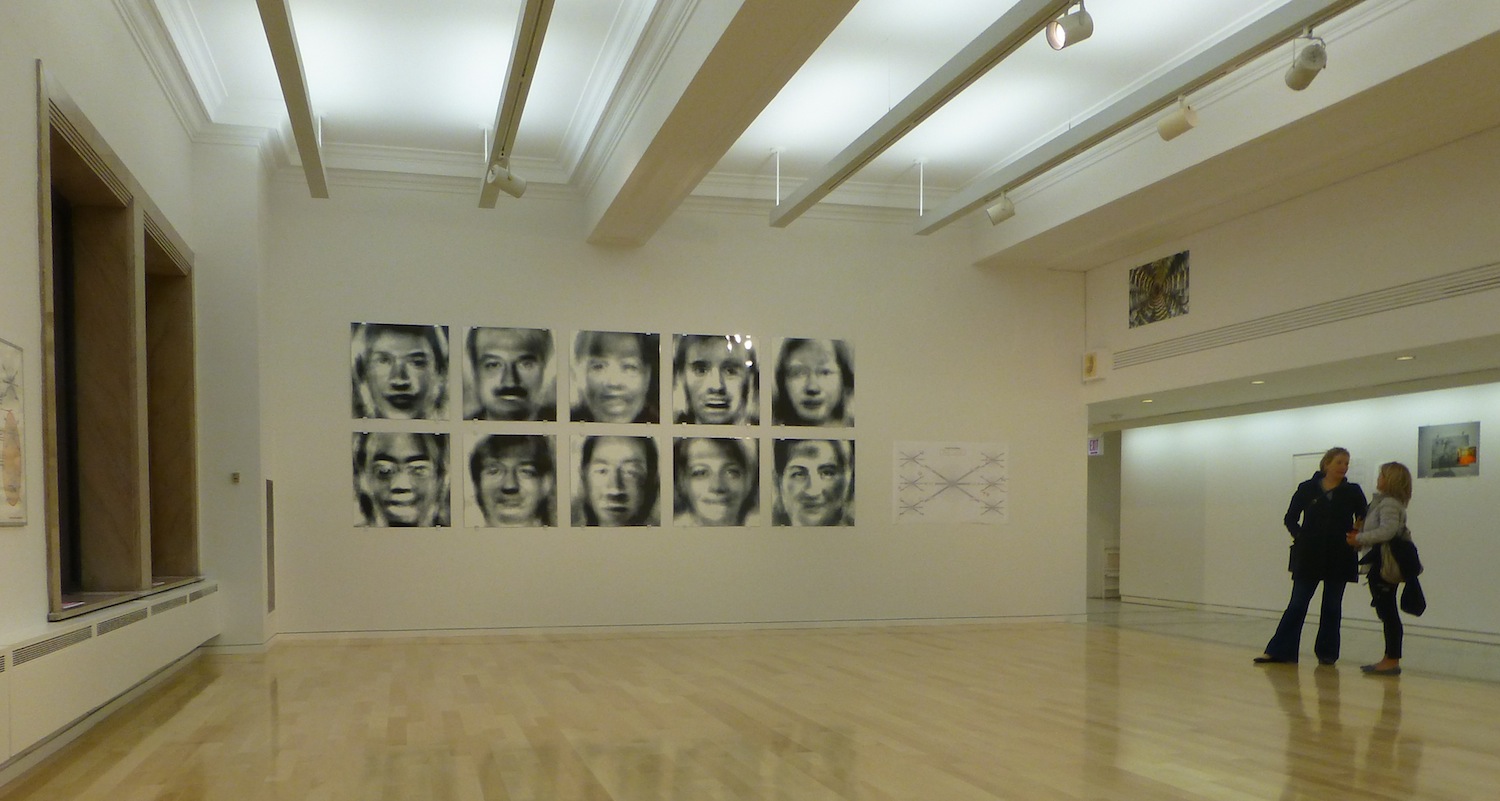Face Field Project
The Face Field project is a series of new media experiments using face recognition technology.
The Face Field is an infinite field of unique, artificial faces that are generated from a research database of scanned real faces. Users may scan their own faces to be added to that database. The diversity, nuance and complexity of the Face Field that draws from it increases with each entry.
Spanning 60 dimensions, the field is produced by subverting standard face recognition algorithms.
This project reverses face detection and recognition narratives. Instead of singling out, it joins. By suggesting ways of parsing and projecting the visible world, it is epistemic.
The Anti Face
The Anti Face is face recognition turned upside-down. After looking at an image, it creates a face as different from it as possible. It might change gender, age, expression.
Technical details: We calculated 60 Eigenfaces on a training set of over one thousand faces. Whenever an image is uploaded, it undergoes a subspace projection that reconstitutes it as a linear combination of these Eigenfaces. The anti-face calculation is not a face recognition algorithm. Instead, it creates a face opposite to yours, rather than finding a face similar to yours. It does this by multiplying each eigen value by -1.
The Synth Face
The Synth Face is a face plucked from the 60-dimensional Face Field. Use the sliders to navigate this field and retrieve other faces from its depth. Paint a face with the 60 brushes at your disposal.

The faces at the ‘Enter the Matrix’ show were generated using this algorithm:
The Synth Face is a face plucked from the 60-dimensional Face Field. Use the sliders to navigate this field and retrieve other faces from its depth. Paint a face with the 60 brushes at your disposal.

The faces at the ‘Enter the Matrix’ show were generated using this algorithm:
The Face Spectrum
The Face Spectrum uses face recognition software to join rather than single out. It sorts all the faces in our database by their position in face space, by how similar they are in other words.
As the density of real faces in the Face Field increases the impact has improved and the spectrum of human faces emerges. This will only improve over time as people use the app to populate the database.
The Face Spectrum uses face recognition software to join rather than single out. It sorts all the faces in our database by their position in face space, by how similar they are in other words.
As the density of real faces in the Face Field increases the impact has improved and the spectrum of human faces emerges. This will only improve over time as people use the app to populate the database.
Visualizing High Dimension Spaces
Our brains struggle visualizing spaces with more than 3 dimensions. This is a problem we encountered frequently in our FaceField project where we were working with 60 dimensional spaces.

Adelheid Mers’ fractal 3-line matrix pointed us towards using fractals to represent higher dimensions:
Our brains struggle visualizing spaces with more than 3 dimensions. This is a problem we encountered frequently in our FaceField project where we were working with 60 dimensional spaces.

Adelheid Mers’ fractal 3-line matrix pointed us towards using fractals to represent higher dimensions:
The video to the left is a programmatic implementation using three.js of how a high dimensional viewer might work.
More here.
Crowd Sourcing
The Anti Face App allows you to view your AntiFace, Synth Face, as well as your location in the Face Spectrum. By using the App you contribute your face to the database as well. As more people participate the experiment and experience gets richer.
Interactive Exhibition

Designed as part of our submission to Google’s 2014 Dev Art Competition, our proposal was short-listed.

Designed as part of our submission to Google’s 2014 Dev Art Competition, our proposal was short-listed.





